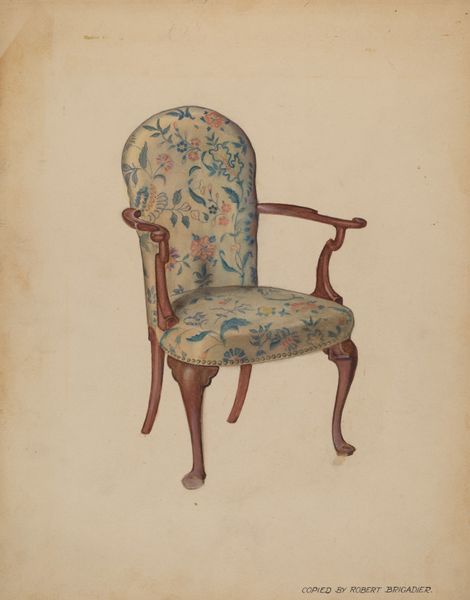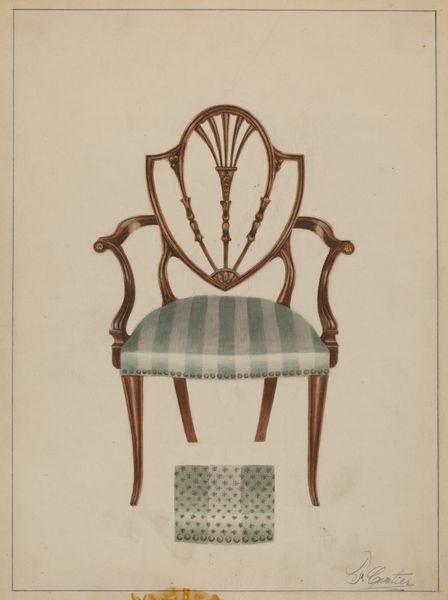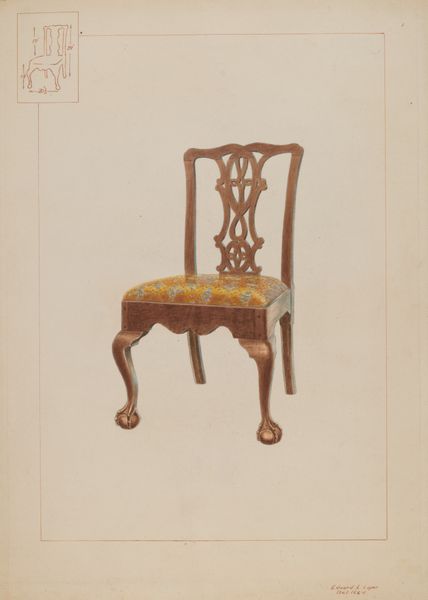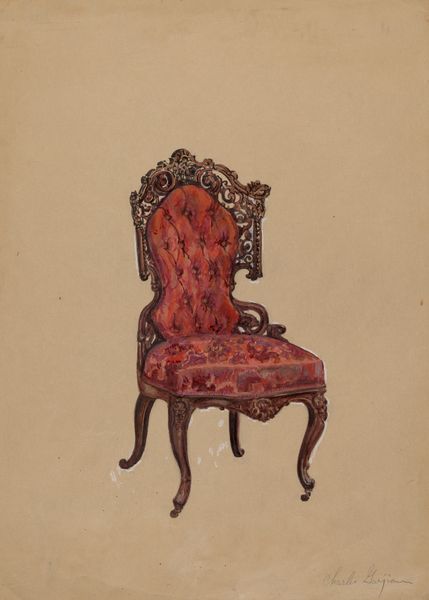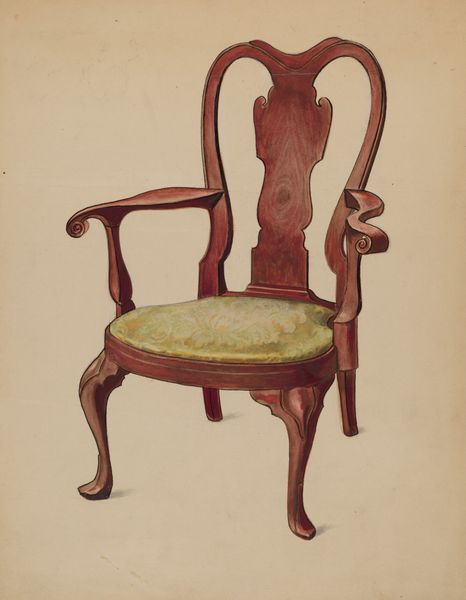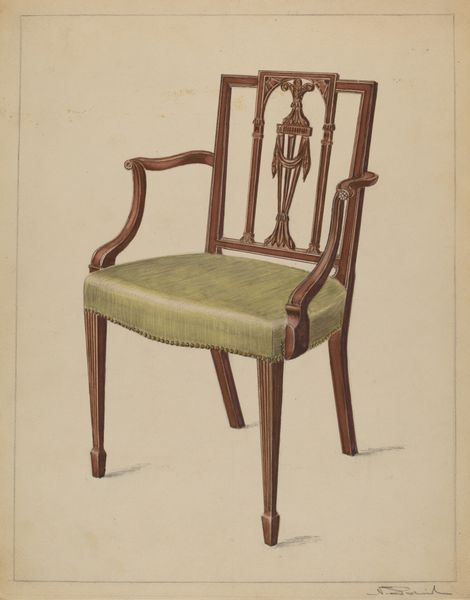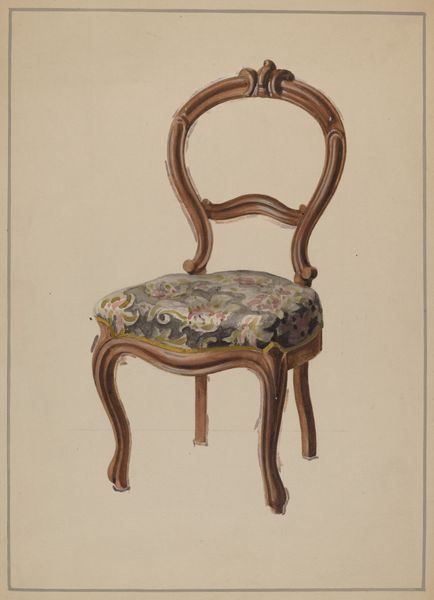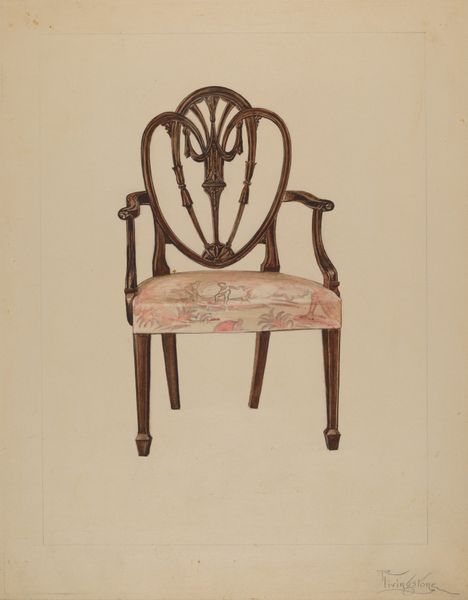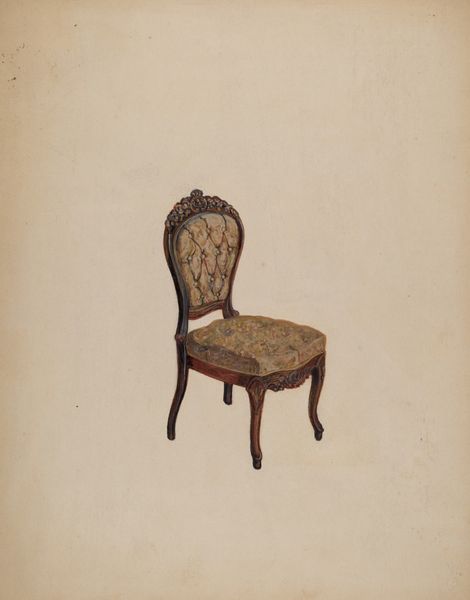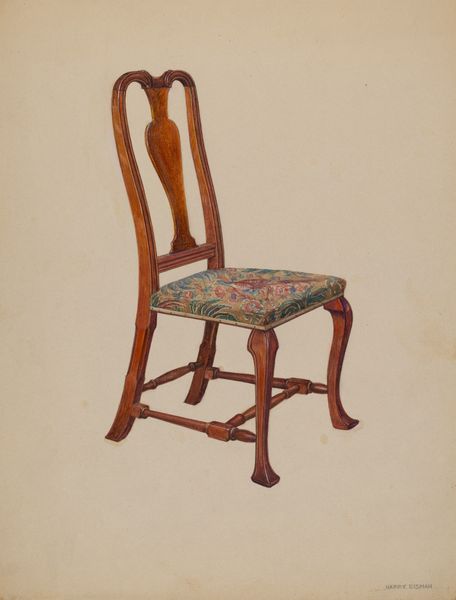
drawing, watercolor
#
drawing
#
water colours
#
watercolor
#
watercolour illustration
#
academic-art
Dimensions: overall: 29.8 x 29.6 cm (11 3/4 x 11 5/8 in.) Original IAD Object: none given
Copyright: National Gallery of Art: CC0 1.0
Curator: Oh, this watercolour, done in 1936 by Florence Choate, simply titled "Armchair," presents us with an interesting example of applied design. The composition centers on the presentation of the titular piece of furniture. What is your first take, given the aesthetic? Editor: Immediately, there’s an almost haunting stillness about it, like a relic from a bygone era of bourgeois domesticity. The floral pattern, those legs – they all suggest a kind of suppressed history. The materiality also suggests that this rendering exists beyond function and representation; what social needs were fulfilled through such a visual representation? Curator: Certainly. These types of images were intended to elevate the social standing of certain objects; drawings of furniture served multiple purposes in the interwar period. They were frequently intended as both documents for manufacturers as well as aspirations of status and a demonstration of "good" taste for consumers, especially for those eager to perform upward social mobility. Editor: The absence of a human figure does feel intentional. Was this rendering meant to signal who *should* inhabit such spaces – what kinds of bodies are being envisioned, and what kinds are erased or excluded? The choice of medium, watercolour, also feels quite telling. How does its delicacy tie in with contemporary gendered expectations of interiority and decorum? Curator: Yes, it also is valuable to note that such works demonstrate the rise in prominence of women as consumers and as professionals working within the commercial arts; these women’s social status often became conflated with the decorative arts they made and consumed, or the taste and aspirations they projected through design and purchasing power. In fact, these designs are examples of the subtle negotiations that designers had to undergo when representing consumer values; after all, the commercial arts were intended to be aspirational for middle class women as they created a space for their self-representation and material value. Editor: And the idea of self-representation brings us back to considering who isn’t present in the work itself. The rendering feels… polite, almost complicit in upholding the visual status quo, not challenging it. But then, how could it? Its very medium, the watercolor itself, is laden with historical baggage around taste, class and gender... Curator: Precisely. Ultimately, "Armchair" reflects both the design sensibilities and the social constraints operating during its time, reminding us of the silent dialogues between art, society, and the evolving roles assigned to individuals. Editor: I agree. Looking closer reveals hidden voices. Each visual choice, even the medium itself, holds cultural reverberations worth exploring. Thanks!
Comments
No comments
Be the first to comment and join the conversation on the ultimate creative platform.
